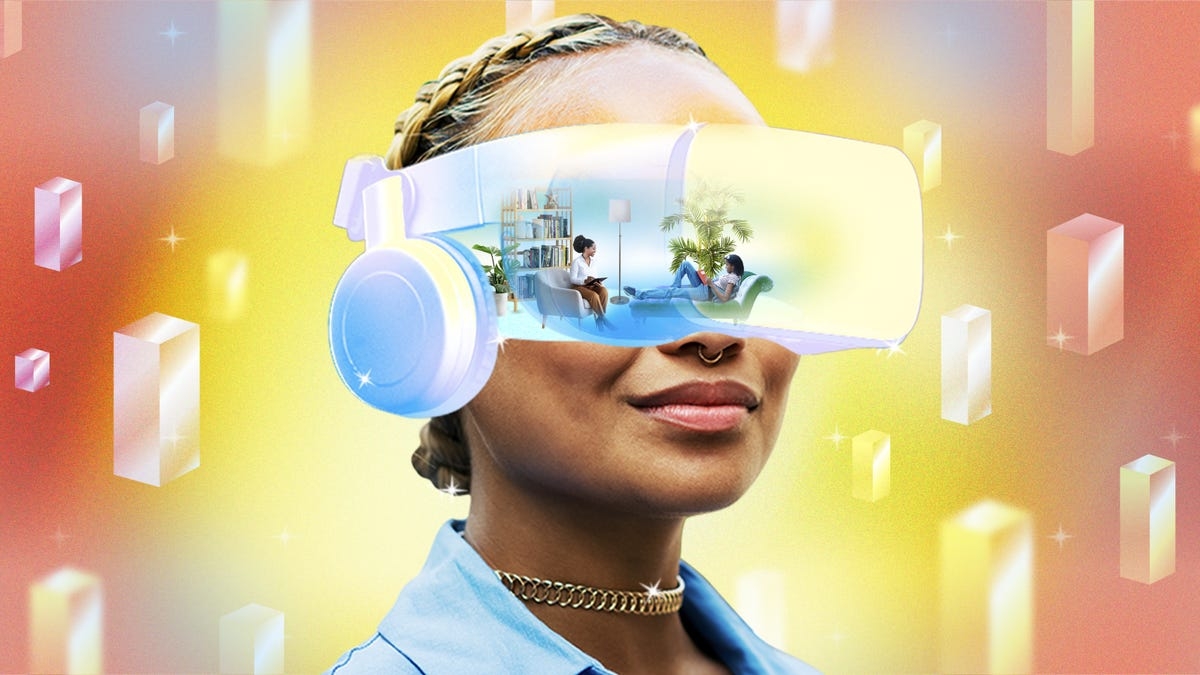Virtual reality (VR) has rapidly evolved from a gaming technology into a transformative tool in healthcare. In the realm of mental health, VR offers immersive experiences that enhance traditional therapies, creating unique opportunities for treatment and recovery. By simulating real-world scenarios or creating entirely new environments, VR addresses mental health challenges in innovative ways. Its applications range from treating anxiety and PTSD to supporting mindfulness and emotional well-being.
In this article, we explore how VR is reshaping mental health care and its potential to revolutionize therapy in the coming years.
The Science Behind VR Therapy
How Virtual Reality Engages the Brain
Virtual reality leverages cutting-edge technology to immerse users in simulated environments, activating multiple sensory pathways. This engagement creates a sense of presence, making experiences in VR feel real. For mental health therapy, this means patients can confront fears, practice skills, or explore emotions in a safe, controlled setting. Research shows that VR can stimulate neural plasticity, helping the brain form new connections and overcome maladaptive patterns.

Customizable and Patient-Centric
One of VR’s key strengths is its adaptability. Therapists can tailor VR scenarios to individual needs, ensuring personalized care. For instance, a patient with a fear of heights can experience progressive exposure to tall buildings in a virtual space, with the intensity adjusted as they grow more comfortable. This flexibility empowers both patients and clinicians to address specific mental health goals.
Key Applications of Virtual Reality in Mental Health
1. Treating Anxiety Disorders

Exposure therapy is a cornerstone of anxiety treatment, and VR enhances this by offering controlled, repeatable scenarios. For individuals with social anxiety, VR environments like virtual conferences or social gatherings provide a safe space to practice interactions. This immersive exposure helps patients build confidence and reduce avoidance behaviors over time.
2. Managing PTSD
Post-traumatic stress disorder (PTSD) often involves reliving traumatic memories. VR allows for gradual exposure to trauma-related cues in a therapeutic setting. For example, veterans with combat-related PTSD can revisit simulated battlefield environments under the guidance of trained professionals. This exposure helps desensitize them to triggers and reduce symptoms.
3. Enhancing Mindfulness and Stress Reduction
Mindfulness practices are integral to mental health care, and VR enhances these by immersing users in calming, meditative environments. From serene beaches to peaceful forests, VR apps like TRIPP provide guided meditations that promote relaxation and stress relief. This sensory-rich experience makes mindfulness more accessible, especially for beginners.
4. Supporting Cognitive Behavioral Therapy (CBT)
Cognitive behavioral therapy focuses on changing negative thought patterns, and VR strengthens this by enabling real-time simulations. For instance, a patient with fear of public speaking can practice delivering speeches to a virtual audience, receiving feedback on performance and managing physiological responses.
5. Assisting Addiction Recovery
Virtual reality helps individuals in addiction recovery by simulating high-risk situations, such as parties with alcohol or drug use. These scenarios enable patients to practice coping strategies without real-life consequences, building resilience against cravings and triggers.

Benefits of VR in Therapy
Increased Accessibility
Virtual reality makes mental health care more accessible to diverse populations. For patients in remote areas, VR sessions can be conducted at home with a headset, bridging gaps in care delivery. Additionally, VR therapy often requires fewer sessions than traditional methods, reducing overall treatment costs.
Engaging Younger Generations
Younger individuals, particularly those familiar with technology, are more likely to engage with VR-based interventions. The interactive nature of VR aligns with their preferences, making therapy less intimidating and more appealing.
Objective Progress Tracking

Advanced VR systems can track physiological and psychological responses, offering therapists real-time data on a patient’s progress. Metrics like heart rate variability and gaze patterns provide insights into stress levels and emotional regulation.
Challenges and Considerations
Affordability and Equipment Accessibility
While the cost of VR hardware is decreasing, it remains a barrier for some. High-quality headsets and compatible software require investment, which may limit widespread adoption. Efforts to integrate VR into healthcare systems could help overcome these challenges.
Training and Ethical Standards
Effective VR therapy relies on trained professionals who understand both the technology and its psychological applications. Establishing standardized protocols and ethical guidelines is crucial to ensure patient safety and efficacy.
Addressing Digital Fatigue
Prolonged exposure to virtual environments may lead to discomfort or “cybersickness,” characterized by nausea and dizziness. Therapists need to monitor and limit session durations to prevent these side effects.
The Future of VR in Mental Health
Integration with Artificial Intelligence
Combining VR with artificial intelligence (AI) has the potential to revolutionize therapy further. AI can analyze patient responses in real time, adapting scenarios to maximize therapeutic impact. Virtual therapists powered by AI could also supplement human-led sessions, providing additional support.

Expansion into Group Therapy
VR is expected to play a larger role in group therapy sessions, enabling participants from different locations to interact in shared virtual spaces. This fosters connection and reduces isolation for individuals struggling with mental health issues.
Addressing Stigma
By offering discreet, at-home therapy options, VR reduces barriers for those hesitant to seek help. This could encourage more people to prioritize mental health care and destigmatize the act of seeking treatment.
Conclusion
Virtual reality is redefining how mental health therapy is delivered, combining innovation with empathy to address complex emotional and psychological challenges. Its ability to create safe, immersive environments makes it an invaluable tool for treating anxiety, PTSD, addiction, and more. As VR technology continues to evolve, it holds immense promise for expanding access to care, improving outcomes, and reducing stigma.
Have you experienced virtual reality therapy or want to learn more about its applications? Share your thoughts or explore our resources to discover how VR can support mental wellness. Connect with us today!

Leave a Reply